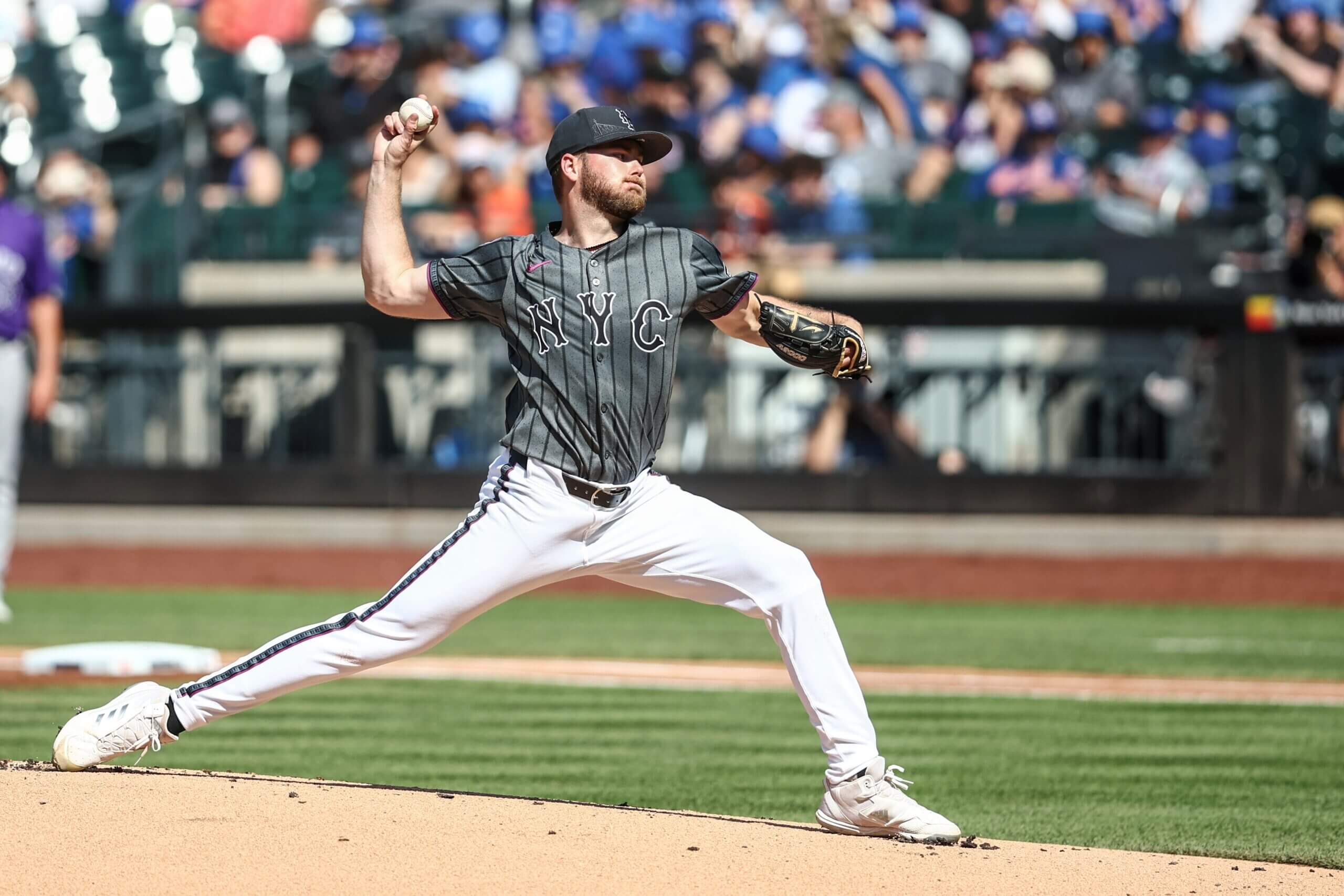NEW YORK — After as shaky a start as he’s had in the major leagues, Christian Scott entered the All-Star break with a declaration.
“I can pitch better,” Scott said Saturday, “and I will pitch better.”
The New York Mets’ 7-3 victory over the Colorado Rockies was more about the other rookie pitchers they used. Jose Buttó escaped the jam he inherited from Scott and pitched two more clean innings, and Dedniel Nuñez recorded his first career save with two frames of his own.
Scott didn’t make it through the fifth, surrendering two more homers and some other hard contact against Colorado. Manager Carlos Mendoza wondered if Scott, pitching on regular rest for the second consecutive outing, grew tired as the game progressed.
“He just got tired toward the end,” Mendoza said. “That’s part of his development and his learning experience at this level.”
Indeed, Scott’s 4 1/3 frames Saturday pushed him to 85 2/3 innings in 2024. His career high, set last year, is 87 2/3. Even so, as the Mets prepare to enter the break firmly in the postseason picture, they’re still counting on Scott to play a significant role in the second half.
Mets win! #LGM pic.twitter.com/cOnm718OUu
— New York Mets (@Mets) July 13, 2024
New York plans to move to a six-man rotation when Kodai Senga returns from the injured list later this month. And in a rotation with some impending free agents and even potential trade candidates, Scott is as important a piece as any other.
So how can they get the most out of him in a postseason chase in 2024 while being responsible with his long-term development?
That’s a process they’ve been prepping for since last summer. During Scott’s breakout season in 2023, the Mets chatted with him about some of the changes they wanted him to make to his repertoire — like the addition of that sweeper — so that he could start working on them ahead of the winter. Then the club outlined a structured throwing program through the offseason that would build strength for Scott without leaving him fatigued entering spring training.
The focus, Scott said, was intent. It wasn’t about how many throws he would make on a given day but how hard he made those throws. Light throwing early in the offseason built up to medium-effort and heavy-effort days later on. Scott made all those throws wearing the PULSE arm sleeve, which could track in real time his effort level to keep him in line.
“You’re trying to monitor not as much how many throws you’re making but the type of throws you’re making,” Scott said. “That alone helped me put a monitor on what my throwing would be this offseason.”
“It’s not always easy because players want to get to the big leagues, especially younger players. They think more is more,” Mets pitching coach Jeremy Hefner said. “But a lot of times, less is more, and quality of work over a quantity of work is best.”
Hefner laughed at how different that offseason work is now compared to when he was a player last decade. Thrice-weekly long-toss sessions have been replaced by more focused work with Plyo Balls, which are better at building velocity and at refining mechanics.
Now in season, the Mets have looked for spots to limit Scott’s workload, most notably during his recent stint back with Triple-A Syracuse and in his last outing in Pittsburgh — the first he’d made in the majors on regular rest. He had less leeway Saturday as well in a second consecutive start on regular rest, though his struggles rendered any pitch limit moot.
Between starts, Scott generally throws a lighter bullpen session than his more veteran teammates. Luis Severino might throw more than 30 pitches in the bullpen; Scott usually tops out at 22 or 23.
The result is that, right near his career high in innings, Scott feels right where he wants to be.
“You work really hard in the offseason to last long in the season,” he said earlier in the week. “My body’s in a great position, and I feel good, ready to go out and compete.”
Hefner and the Mets don’t view an innings count as rigidly as many teams did in the past; they don’t plan a hard shutdown for Scott at a specific number. Instead, they’ll try to be smart after longer outings, as they were when they cut short his previous start in Pittsburgh. They’ll keep an eye on the stress level of each inning for the right-hander and monitor biometric data that makes it easier to evaluate his physical well-being as the season goes on.
“That’s the conversation now,” Hefner said. “What does it actually look like as opposed to just raw numbers?”
“There’s no perfect way to do it. There’s no perfect science to it,” Scott said. “We’re just learning as we go, and I trust their process. I’m really on board with what they’re trying to do. And I’ve seen results, so it’s hard to go away from what they’ve had for me.”
(Photo: Wendell Cruz / USA Today)

